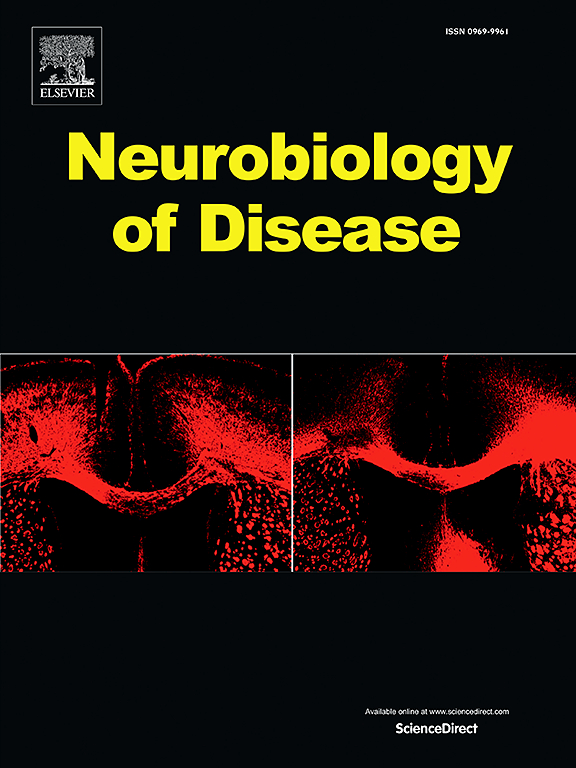SARM1 activation induces reversible mitochondrial dysfunction and can be prevented in human neurons by antisense oligonucleotides
IF 5.1
2区 医学
Q1 NEUROSCIENCES
引用次数: 0
Abstract
SARM1 is a key regulator of a conserved program of axon degeneration increasingly linked to human neurodegenerative diseases. Pathological SARM1 activation causes rapid NAD consumption, disrupting cellular homeostasis and leading to axon degeneration. In this study, we develop antisense oligonucleotides (ASOs) targeting human SARM1, demonstrating robust neuroprotection against morphological, metabolic, and mitochondrial impairment in human iPSC-derived dopamine neurons induced by the lethal neurotoxin vacor, a potent SARM1 activator. Furthermore, our findings reveal that axon fragmentation can be prevented, and mitochondrial dysfunction reversed using the NAD precursor nicotinamide, a form of vitamin B3, even after SARM1 activation has occurred, when neurons are already unhealthy. This research identifies ASOs as a promising therapeutic strategy to block SARM1, and provides an extensive characterisation and further mechanistic insights that demonstrate the reversibility of SARM1 toxicity in human neurons. It also identifies the SARM1 activator vacor as a specific and reversible neuroablative agent in human neurons.
SARM1激活可诱导可逆的线粒体功能障碍,并可通过反义寡核苷酸在人类神经元中预防。
SARM1是轴突变性保守程序的关键调控因子,与人类神经退行性疾病的关系日益密切。病理性SARM1激活导致NAD快速消耗,破坏细胞稳态并导致轴突变性。在这项研究中,我们开发了针对人类SARM1的反义寡核苷酸(ASOs),证明了对由致命的神经毒素vacor(一种有效的SARM1激活剂)诱导的人类ipsc衍生的多巴胺神经元的形态学、代谢和线粒体损伤具有强大的神经保护作用。此外,我们的研究结果表明,即使在SARM1激活发生后,当神经元已经不健康时,也可以使用NAD前体烟酰胺(维生素B3的一种形式)来预防轴突断裂,并逆转线粒体功能障碍。本研究确定ASOs是阻断SARM1的一种有前景的治疗策略,并提供了广泛的表征和进一步的机制见解,证明了SARM1毒性在人类神经元中的可逆性。它还确定了SARM1激活因子vacor是人类神经元中特异性和可逆的神经消融剂。
本文章由计算机程序翻译,如有差异,请以英文原文为准。
求助全文
约1分钟内获得全文
求助全文
来源期刊

Neurobiology of Disease
医学-神经科学
CiteScore
11.20
自引率
3.30%
发文量
270
审稿时长
76 days
期刊介绍:
Neurobiology of Disease is a major international journal at the interface between basic and clinical neuroscience. The journal provides a forum for the publication of top quality research papers on: molecular and cellular definitions of disease mechanisms, the neural systems and underpinning behavioral disorders, the genetics of inherited neurological and psychiatric diseases, nervous system aging, and findings relevant to the development of new therapies.
 求助内容:
求助内容: 应助结果提醒方式:
应助结果提醒方式:


